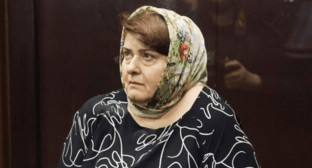23 May 2003, 23:18
Kumiks
They call themselves Kumuk. Nation in Dagestan; small groups live in Chechnya, Ingushetia and North Osetia. Their population in the Russian Federation is 282 thousand people (1992), 232 thousand of those live in Dagestan. They belong to the Balkan-Caucasus race of the big European race. Dialects: Buinak, Kaitak, Khasavjurt. Literary language is based on Buinak and Khasavjurt dialects. Written language is based on Russian alphabet. Russian language is common. Religious people are Moslems-sunnits.
Kumik nation started to form in the 10-11th centuries. Their ethnic base was formed by the aboriginal population of Dagestan valley; in the ethnogeny of Kumiks there also participated the newly arrived Turk-language tribes (mainly Kupchaks- Polovets) that gave the locals their language. On the Kumik territory there existed a number of feudal formations, the biggest of them was the Tarkov Shamkhalstvo. When Dagestan joined Russia, it caused the fast development of the productive forces and the capitalization of economy.
Traditional occupations are agriculture (wheat, barley, millet, rice, corn); cattle breeding, including the distant-pasture breeding (cattle, sheep); horticulture, vine-growing, growing vegetables and bee-keeping. Home-trades and trades: making broadcloth, cotton weaving, making carpets, processing leather, wood, metal, stone etc.
Villages had horizontal planning. Traditional dwellings were first made of turluk, then of adobe, with a sloped roof; stone, with a flat roof (one-floor, 1,5-floor or 2-floor of different planning).
National costume of men - a shirt, trousers, beshmet, cherkeska, burka, papakha, leather boots. The female costume consisted of a dress-shirt over the nude body, trousers (shalvar) and a dress (arsar, polusha as well as kabalai with double sleeves). Head gear - chutku, kerchiefs. Footwear - leather chuvaki and boots with no backs. Decorations adorned the costume.
Food - flour, meat and milk dishes: khinkal, kurze (dumplings), dolma, pilav, pies with meat and vegetables. The feudal relations prevailed, but there remained some elements of patriarchal-tribal relations. The system of relations is of Arab type.
Folklore - poetic legends, songs, poems, musical compositions.




